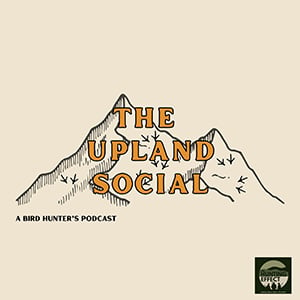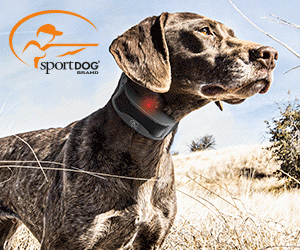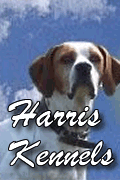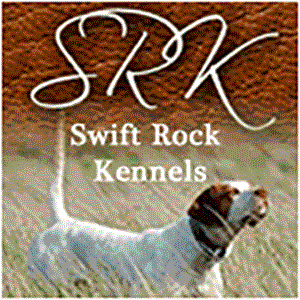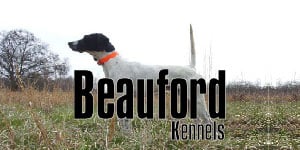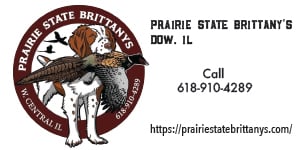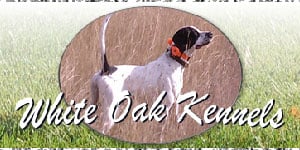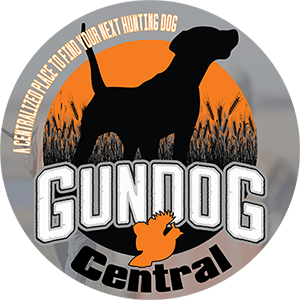And the Birds Whistled Bob-white
Posted 09/18/2022
Quail hunting in the South has always been as common as sunburn. Due to the fertile soil, flat and rolling coastal plains that are cut by long rivers and dotted with lakes and ponds, made for a perfect farming. Mild winters with hot, humid summers meant crops grew for longer times of the year than just about any other part of the country. Cotton, rice, peanuts, tobacco, peaches, sugar cane, watermelons, and indigo, the blue dye that comes from the plant, were staples. It didn't matter if the farming occurred on plantations several thousand acres big or on 50-acre tenant farms, one thing was for sure. Quail were abundant.

There was diverse forage, nesting and brood-rearing cover, all of which provided coveys with food and shelter. Young birds found plenty of protein-rich insects, adults found seeds, plants berries and fruits. Bunch grasses, low-woody brush, and plants with broad leaves offered shade and protection from avian predators in the summer and warmth in the cooler months. A bird an acre was the norm, and with all of that open space Bobwhite quail flew everywhere. Families enjoyed fast food for many suppers. All it took was a quick walk to find the barnyard covey and a few good shots, more if your family was big.

But can you image 120 coveys of wild quail in a day? With 20 or more birds per covey? Two dog men remember those days well, for Harold Ray and John Rex Gates were right in the middle of it. Ray and Gates were breeding, training, and competing dogs at the highest levels. Their consistency of winning earned both men inclusion in the prestigious Field Trial Hall of Fame. Bird hunting is all about the dogs, and some of their dogs and bitches were inducted into the Sporting Dog Hall of Fame. They remember the days when quail flew everywhere.

"I arrived in Georgia in 1958," Ray said, "and started training dogs for Fred Beven. In 1964 I began working for Elwin and Inez Smith of Smith Setters. Developing a kennel of good dogs meant I needed places to run them, and it was all around us. Back then there was so much farmland that the average hunter on public land easily could find lots of birds. During a low cycle I'd find about 20 coveys per day but in an average year it'd be common to find 50 coveys per day. The number of quail helped me develop high quality dogs like CH Tomoka, CH The Performer, CH Bonafide and CH Destinare who are honored in the Sporting Dog Hall of Fame. Those dogs sired a lot of pups, and their bloodlines have contributed to enhancing the breed which is what it's all about. It's one reason why a lot of today's hunters have great dogs."
"I remember running in the Masters Classic with 9CH Bonafide. I was handling him but he was owned by one of Mr. Smith's friends, Dr. Ted and Edna Morgan. Ronnie Smith's Fabricator was the brace mate, and in one hour of running, Ronnie and I found 26 coveys. Bonafide had one more find and won, but that shows folks what the peak quail days were like. I remember running dogs on Blue Springs Plantation with John Rex Gates and we found 120 coveys in a single day. "
"These days biologists look for one quail per acre. But back then we'd see more than that. I remember running dogs at John Olin's plantation. Mr. Olin kept a ledger of records and it was thick. He studied the age, sex and crop contents on every harvested bird. At one point Mr. Olin wanted to learn about different management techniques, so he brought in the head biologist from the King Ranch, a man named Val Lehman. Lehman's work on the King Ranch led to a population increase of three quail per acre. They did that by burning every other year and opening up of tree canopies."
"Quail are fascinating little birds. I remember running dogs with Tommy Long and we found between 80 and 90 coveys in one day. There was a weather change overnight, but since we found so many birds we decided to go back there in the morning. Wouldn't you know it, that day we only found three coveys. The quail weren't gone, but they sure felt the pressure from the dogs and moved around. Wild quail are like that, and that's part of what makes them so interesting."

"But these days are different now. The changes came about in the 1980's, and it was because the land was farmed differently. Once soybean prices went through the roof all the farmers cut the trees and grasses and planted beans. They used Temik and Furigana pesticides that were sprayed from airplanes. That killed all of the insects and that makes it tough for quail to get the protein they need especially for breeding. The birds that survived were weaker for it, and that made their survival more difficult. Next came released birds, and while that's logical it really didn't help much at all. In fact, it weakened the gene pool even more."
"Trapping went away in the 1980's, too. Folks didn't want fur coats any longer and racoons, coyotes and foxes came back in big numbers. Those are a quail's sworn enemy, mostly because they pick off a bird here or there until the covey is gone. We see a lot of hawks now. So many predators make life really hard for a quail."
John Rex Gates remembers those days fondly. "Way back yonder in the 50's, 60's, and 70's there was a lot of farming going on," he said. "The farming wasn't sophisticated as it is today. The fields weren't as plowed and harrowed up as they are now. Spilled grain was left in the fields and the quail ate it up. There was no spraying, and everything was natural. All of the land was healthy which is why public land hunters could find between 20 and 50 coveys of birds in a day.

"Having lots of birds makes it easy to fall in love with bird dogs. We used to laugh that with so many birds an average dog could break themselves. That's not true of course, every dog needs training. But with so many wild bird contacts the dogs learned how to hunt. They learned the kind of things that make good dogs great. They learned how to work into the wind and how to handle birds they've located. Wild birds are different, and dogs learn a heck of a lot more from them than they do from released birds."
"I remember Safari, a pointer bitch I had back in the 70's. Safari was a big running, hard-working girl. She won 10 open championships and was the top dog in the world. One day we had a box of raised quail in the truck and we released 'em in the field. I cut Safari loose, and she wouldn't point a single one of 'em. Wild and released birds smell differently, but she wanted nothing to do with those tame birds. Safari was a wild bird dog, plain and simple.
"Oklahoma Flush only liked wild quail as well. He also won 10 open championships and was the #2 dog in the world at that time. I remember cutting him loose on Blue Springs Plantation with my friend Jerome B. Robinson. Oklahoma Flush pointed 16 coveys of birds in 90 minutes. That's a covey about every five minutes. Those are the kind of numbers we had back then, and it's why so many folks got interested in bird dogs. "

"But having that number of birds on a public or private property costs some money. I remember running dogs with Robert Woodruff. He was the president of Coca-Cola at the time and he also was a quail hunter. Mr. Woodruff owned Ichauway Plantation and also kept records of the birds he and his groups shot. One year, Mr. Woodruff decided to figure out how much it cost to harvest a quail. His accountants set about keeping track of every bird and at the end of the season they ran the numbers. There were a lot of quail harvested on that 30,000-acre plantation, and all in the cost to kill a quail came in around $250 per bird."
"Well, we won't be doing that anymore," Mr. Woodruff said.
"No more hunting?" said one of his guests.
"No, we'll keep hunting," Mr. Woodruff said. "But we're not going to figure out how much it costs anymore."
Who knows if we'll ever see those kind of numbers of birds on public land, but getting involved in conservation is a way to help stem the tide. It doesn't matter if it's on a national, regional or local level, every little bit helps. At the very least, those efforts give us all hope. And these days, we could all use a little more hope.

There was diverse forage, nesting and brood-rearing cover, all of which provided coveys with food and shelter. Young birds found plenty of protein-rich insects, adults found seeds, plants berries and fruits. Bunch grasses, low-woody brush, and plants with broad leaves offered shade and protection from avian predators in the summer and warmth in the cooler months. A bird an acre was the norm, and with all of that open space Bobwhite quail flew everywhere. Families enjoyed fast food for many suppers. All it took was a quick walk to find the barnyard covey and a few good shots, more if your family was big.

But can you image 120 coveys of wild quail in a day? With 20 or more birds per covey? Two dog men remember those days well, for Harold Ray and John Rex Gates were right in the middle of it. Ray and Gates were breeding, training, and competing dogs at the highest levels. Their consistency of winning earned both men inclusion in the prestigious Field Trial Hall of Fame. Bird hunting is all about the dogs, and some of their dogs and bitches were inducted into the Sporting Dog Hall of Fame. They remember the days when quail flew everywhere.

"I arrived in Georgia in 1958," Ray said, "and started training dogs for Fred Beven. In 1964 I began working for Elwin and Inez Smith of Smith Setters. Developing a kennel of good dogs meant I needed places to run them, and it was all around us. Back then there was so much farmland that the average hunter on public land easily could find lots of birds. During a low cycle I'd find about 20 coveys per day but in an average year it'd be common to find 50 coveys per day. The number of quail helped me develop high quality dogs like CH Tomoka, CH The Performer, CH Bonafide and CH Destinare who are honored in the Sporting Dog Hall of Fame. Those dogs sired a lot of pups, and their bloodlines have contributed to enhancing the breed which is what it's all about. It's one reason why a lot of today's hunters have great dogs."
"I remember running in the Masters Classic with 9CH Bonafide. I was handling him but he was owned by one of Mr. Smith's friends, Dr. Ted and Edna Morgan. Ronnie Smith's Fabricator was the brace mate, and in one hour of running, Ronnie and I found 26 coveys. Bonafide had one more find and won, but that shows folks what the peak quail days were like. I remember running dogs on Blue Springs Plantation with John Rex Gates and we found 120 coveys in a single day. "
"These days biologists look for one quail per acre. But back then we'd see more than that. I remember running dogs at John Olin's plantation. Mr. Olin kept a ledger of records and it was thick. He studied the age, sex and crop contents on every harvested bird. At one point Mr. Olin wanted to learn about different management techniques, so he brought in the head biologist from the King Ranch, a man named Val Lehman. Lehman's work on the King Ranch led to a population increase of three quail per acre. They did that by burning every other year and opening up of tree canopies."
"Quail are fascinating little birds. I remember running dogs with Tommy Long and we found between 80 and 90 coveys in one day. There was a weather change overnight, but since we found so many birds we decided to go back there in the morning. Wouldn't you know it, that day we only found three coveys. The quail weren't gone, but they sure felt the pressure from the dogs and moved around. Wild quail are like that, and that's part of what makes them so interesting."

"But these days are different now. The changes came about in the 1980's, and it was because the land was farmed differently. Once soybean prices went through the roof all the farmers cut the trees and grasses and planted beans. They used Temik and Furigana pesticides that were sprayed from airplanes. That killed all of the insects and that makes it tough for quail to get the protein they need especially for breeding. The birds that survived were weaker for it, and that made their survival more difficult. Next came released birds, and while that's logical it really didn't help much at all. In fact, it weakened the gene pool even more."
"Trapping went away in the 1980's, too. Folks didn't want fur coats any longer and racoons, coyotes and foxes came back in big numbers. Those are a quail's sworn enemy, mostly because they pick off a bird here or there until the covey is gone. We see a lot of hawks now. So many predators make life really hard for a quail."
John Rex Gates remembers those days fondly. "Way back yonder in the 50's, 60's, and 70's there was a lot of farming going on," he said. "The farming wasn't sophisticated as it is today. The fields weren't as plowed and harrowed up as they are now. Spilled grain was left in the fields and the quail ate it up. There was no spraying, and everything was natural. All of the land was healthy which is why public land hunters could find between 20 and 50 coveys of birds in a day.

"Having lots of birds makes it easy to fall in love with bird dogs. We used to laugh that with so many birds an average dog could break themselves. That's not true of course, every dog needs training. But with so many wild bird contacts the dogs learned how to hunt. They learned the kind of things that make good dogs great. They learned how to work into the wind and how to handle birds they've located. Wild birds are different, and dogs learn a heck of a lot more from them than they do from released birds."
"I remember Safari, a pointer bitch I had back in the 70's. Safari was a big running, hard-working girl. She won 10 open championships and was the top dog in the world. One day we had a box of raised quail in the truck and we released 'em in the field. I cut Safari loose, and she wouldn't point a single one of 'em. Wild and released birds smell differently, but she wanted nothing to do with those tame birds. Safari was a wild bird dog, plain and simple.
"Oklahoma Flush only liked wild quail as well. He also won 10 open championships and was the #2 dog in the world at that time. I remember cutting him loose on Blue Springs Plantation with my friend Jerome B. Robinson. Oklahoma Flush pointed 16 coveys of birds in 90 minutes. That's a covey about every five minutes. Those are the kind of numbers we had back then, and it's why so many folks got interested in bird dogs. "

"But having that number of birds on a public or private property costs some money. I remember running dogs with Robert Woodruff. He was the president of Coca-Cola at the time and he also was a quail hunter. Mr. Woodruff owned Ichauway Plantation and also kept records of the birds he and his groups shot. One year, Mr. Woodruff decided to figure out how much it cost to harvest a quail. His accountants set about keeping track of every bird and at the end of the season they ran the numbers. There were a lot of quail harvested on that 30,000-acre plantation, and all in the cost to kill a quail came in around $250 per bird."
"Well, we won't be doing that anymore," Mr. Woodruff said.
"No more hunting?" said one of his guests.
"No, we'll keep hunting," Mr. Woodruff said. "But we're not going to figure out how much it costs anymore."
Who knows if we'll ever see those kind of numbers of birds on public land, but getting involved in conservation is a way to help stem the tide. It doesn't matter if it's on a national, regional or local level, every little bit helps. At the very least, those efforts give us all hope. And these days, we could all use a little more hope.



